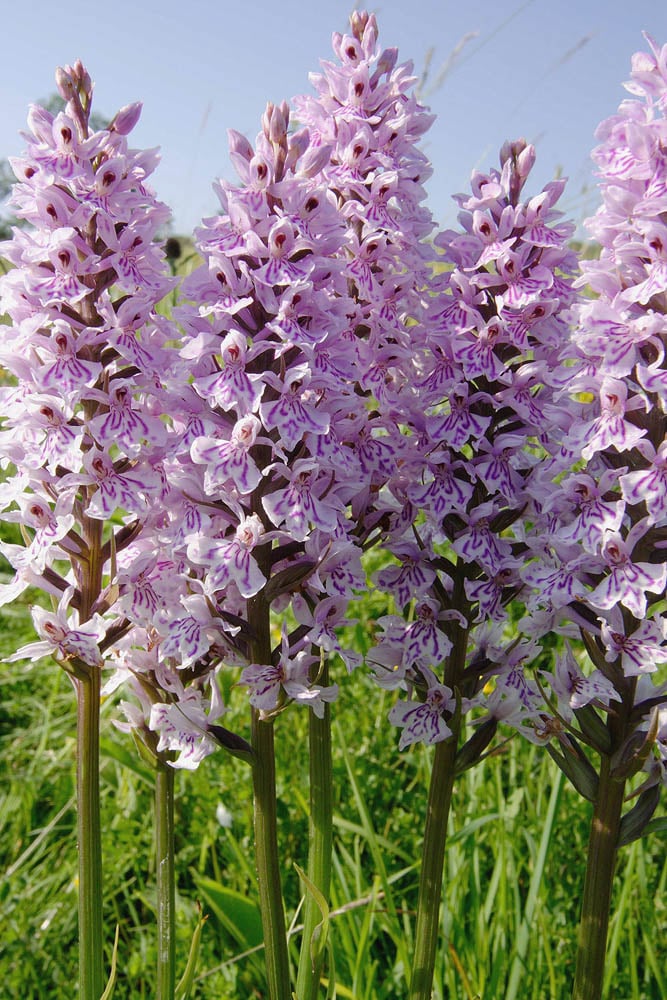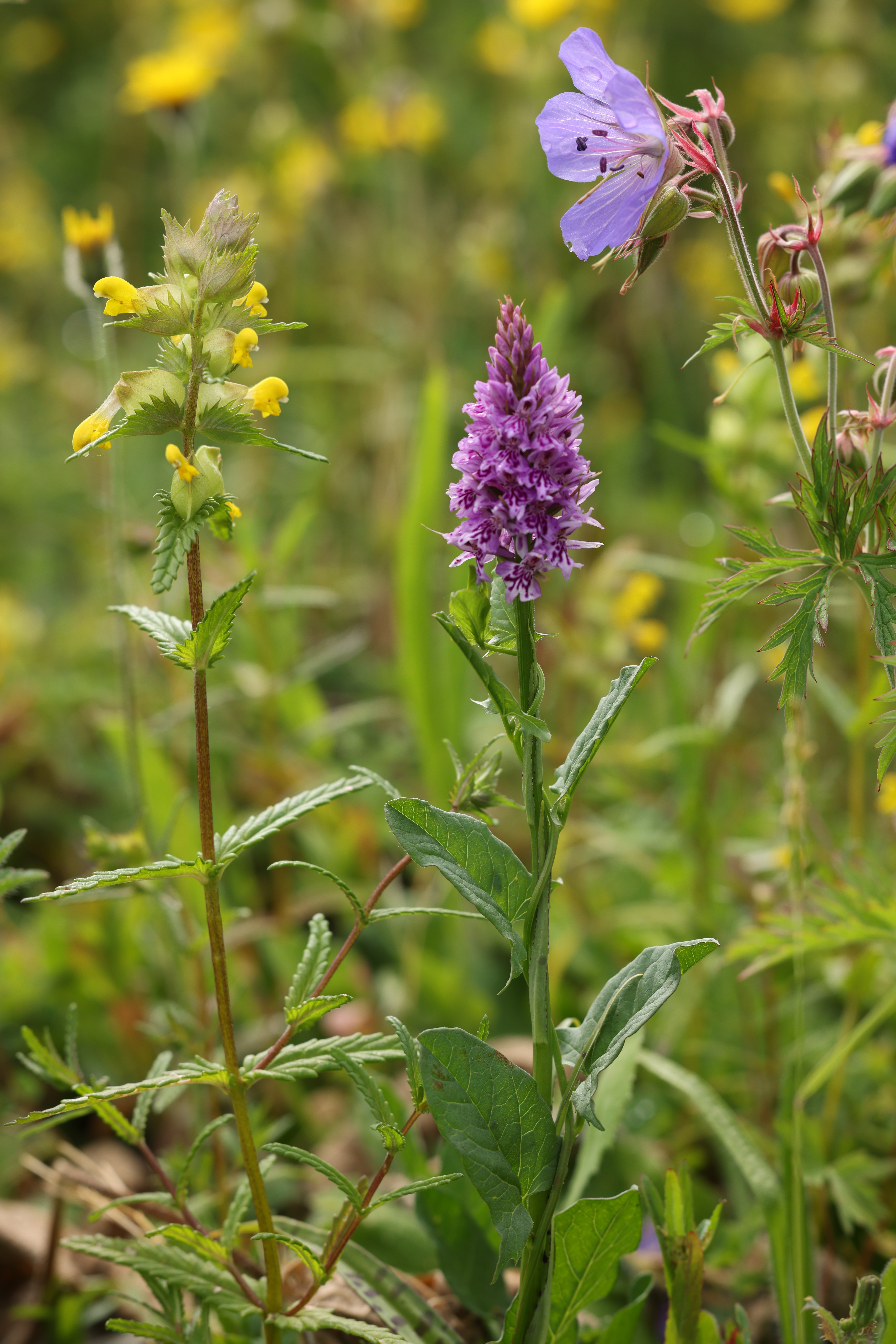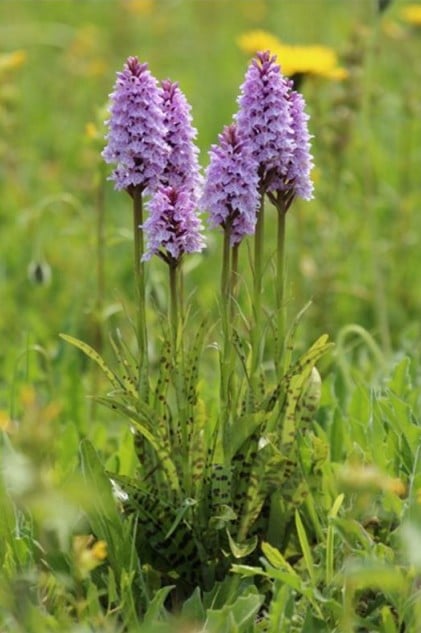Description
As its name suggests Common spotted-orchid is probably the commonest and most familiar of our wild orchids. An attractive perennial plant with a spire of pale pink, two lipped flowers lined and blotched with dark purple and with narrow, usually dark spotted leaves it is unmistakably an orchid. Flowers from late May to August.
NB: SEED SUPPLIED WITH SOIL GRANULES. Pure Orchid seed is extremely fine dust-like with an estimated million seeds per gram! It is tricky to handle and liable to blow away in the wind. For this reason the seed we offer has been combined with soil granules to aid handling and dispersal to the ground. see below for more details.
Habitat Information
Common spotted-orchid is a short to medium height perennial of calcareous to neutral soils found in a broad range of habitats including chalk grassland, meadows, scrub, woodland, marshes and fens, dune-slacks, and even mildly acidic heaths. Although often found in relatively unmanaged habitats it seems to do particularly well following disturbance, which explains why it can sometimes be found in high numbers on artificial habitats such as waste ground, quarries and railway embankments.
Growing Information
Orchids have a somewhat complex biology, particularly with regard to regenerating plants from seed. Raising orchid plants from seed in pots can be difficult and is a job for specialist nurseries or laboratories. Fortunately, we have found that when orchid seed is sown into the right location ‘nature’, in partnership with the orchid, takes care of the complex biology; and so, with patience, it is possible to get results.
Orchids have very fine dust-like seed that can survive perhaps 5 years or more while dormant in the soil. When eventually seed germination occurs they must almost immediately form a close association with specific soil mycorrhizal fungi. These fungi are widespread in the environment as fungal networks in the soil or spores. The symbiotic relationship between orchid and fungi continues below ground for several years before the young plant emerges and is visible above ground. Common spotted orchid typically takes 3-4 years from sowing to first flowering. Some orchids will take longer, depending on species and site conditions. This process can take as long as 10 -15 years, especially in younger meadow creation and restoration sites where it can take this long for the soil biome to mature and become suitable for orchid growth.
Choosing the best site for orchids
There is no easy way of knowing if your site can provide the right conditions for Orchids. The pragmatic answer is to try a bit, then wait to be surprised some years later by the result!
We have had our best, and quickest, results from sowing orchid seed into already established, well managed, wild flower meadows. It appears that Orchids establish and grow best in short, open, flower rich swards on poor soils.
Sowing Information
To facilitate handling and sowing of such light dust-like seed, and to prevent it blowing away in the breeze, our Orchid seed is sold as ‘mini seed-balls’. The orchid seed is bulked up with a carrier that includes dry sieved soil granules taken from fields where our Orchids grow.
Sprinkle the orchid seed granules thinly over the surface of your chosen location. If it helps, further bulk up the volume by mixing with damp sand or compost before broadcasting.
Aftercare
Once sown, rain will disperse and wash the seed down through the vegetation and into the soil. Here it can germinate and link up with the mycorrhizal soil fungus.
Manage grassland consistently from year to year including a mid-summer hay cut followed by aftermath mowing/grazing. Once flowering Orchids appear it is worth delaying the hay cut once in a while to mid-August to allow seed set and dispersal (or mow carefully around them until they set seed).
Seed Content
The orchid seed offered here is sold as a mix of soil granules and seed. Each gram you purchase below is made up of 1 part seed to 99 parts soil granules by weight, and will contain an estimated 10,000 orchid seeds.
Both the cost and seed numbers per gram reflect the number and value of seeds contained in each gram ordered.




